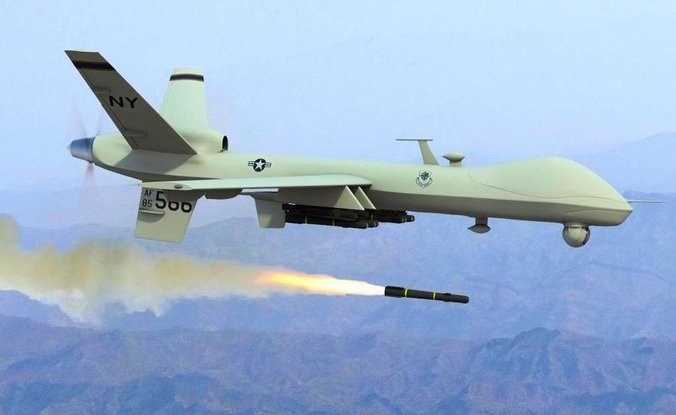The Evolution of Drone Warfare: A New Era of Combat
Introduction to Drone-to-Drone Engagements
The landscape of drone warfare is undergoing a tectonic shift, with unmanned aerial vehicles (UAVs) venturing into air-to-air combat roles. This evolution may have significant implications for future aerial warfare. In August 2025, the US Army marked a historic milestone by reporting its first air-to-air kill against an unmanned aerial system (UAS) using an armed quadcopter flown in first-person-view (FPV) mode. This event not only signifies a technological achievement but also foreshadows a new paradigm in warfare dynamics.
Historical Context
The successful engagement of drones in air-to-air combat reflects emerging tactics inspired by the ongoing conflict in Ukraine. In recent years, drone warfare has evolved rapidly, with low-cost FPV drones being harnessed as counter-drone interceptors. This shift aligns with the Pentagon’s directive titled “Unleashing US Military Drone Dominance,” emphasizing the need for drone proliferation across military domains and urging advancements in counter-drone technologies.
Interestingly, while the US Army explores low-cost drones for countering hostile UAS, more sophisticated drones like the MQ-9 Reaper—worth over $30 million—have been deployed in combat zones, showcasing the complexities of modern aerial engagements.
The MQ-9 Reaper: A Case Study
In October 2024, American MQ-9 Reaper drones attempted to shoot down an unidentified object near Yemen, marking a significant operational milestone. During a congressional hearing on unidentified anomalous phenomena (UAP), Rep. Eric Burlison showcased a video demonstrating this encounter. The footage revealed a Reaper tracking an object off Yemen’s coast and launching an AGM-114 Hellfire missile at it. Despite striking the target, the missile seemingly had no effect, raising questions about the engagement’s effectiveness.
Analysts speculate that this unidentified object could have been a Houthi drone, but the specifics remain unclear. This incident underscores the expanding missions of the Reaper beyond traditional reconnaissance and ground strikes, hinting at its potential in air engagements.
Expanding the Role of MQ-9 Reapers
Historically designed for intelligence, surveillance, and reconnaissance (ISR), the MQ-9 Reaper’s vulnerability to advanced air defenses and slow speed have limited its role in high-threat environments. However, modifications to its systems may be expanding its capabilities against unmanned threats. The integration of the Multi-Spectral Targeting System, designed for targets several miles away, exemplifies its adaptability in identifying small, fast-moving aerial targets.
Additionally, enhancements in armament—including the potential fit for air-to-air missiles—may further bolster the Reaper’s role in air engagements. The strategic shift towards aerial engagements represents an understanding of the evolving nature of drone combat.
The Rise of Interceptor Drones
The continuing developments in drone warfare highlight the necessity for effective counter-drone measures. The ongoing war in Ukraine has become a testing ground for innovation in drone technology on both sides. Asymmetric warfare has emerged, necessitating the development of low-cost interceptor drones capable of neutralizing threats in the air.
This evolution in drone-to-drone combat encapsulates a departure from traditional engagement styles, introducing the concept of aerial dogfighting without human pilots. Interceptor drones, designed for detecting and destroying hostile UAVs in mid-air, represent a promising approach to countering the proliferation of cheaper, swarming drones.
Innovations like the Ukrainian drone group Wild Hornets’ FPV quadcopter, capable of reaching altitudes exceeding 11km, further illustrate the advancements being made in interceptor technology.
Advancements in Drone Combat Strategy
Counter-drone systems are not just limited to kinetic interceptors. Emerging technologies in directed energy and electronic warfare are shaping new tactics in drone engagements. Low-cost drones pose unique challenges, as they can overwhelm traditional anti-air systems and require a reassessment of military strategies.
The emergence of interceptor drones can level the playing field, providing a cost-effective alternative to existing air defense solutions. The utilization of AI technology in these drones facilitates sophisticated target recognition capabilities, enabling fully autonomous engagements. This advancement is indicative of a shift toward cooperative operations, where drones can operate in mesh networks for real-time data sharing, thus enhancing operational effectiveness.
Future Prospects of Drone Warfare
Despite contemporary challenges, the innovative landscape of drone warfare could herald a new chapter in military engagements. The potential for fully autonomous drone swarms, capable of self-coordinating in battle scenarios, suggests a future where human intervention is minimized. This transformation in warfare could redefine the balance between offense and defense, ultimately leading to a more automated approach to combat.
Anticipating the long-term implications of these advancements, it’s clear that drone warfare is not merely a trend, but a significant evolution in military strategy. As nations continue to refine these technologies, the possibilities for future engagements remain diverse and immensely complex.

